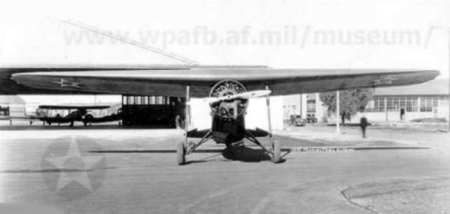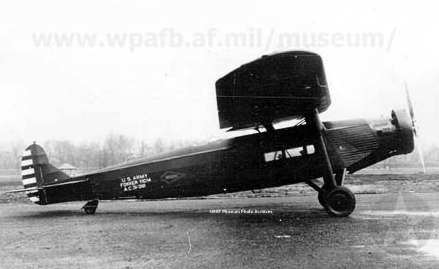Type of aircraft |
Cargoplane |
| Country | U.S. |
| Date | 1929 |
| Crew | 1 pilot |
| Wingspan | 59 ft. 0 in. |
| Lenght | 43 ft 3 in. |
| Height | 12 ft. 10 in. |
| number of passengers | 6 |
| Enginetype | Wright R-1750-13 |
| Engine power |
525 Hp |
| Max. take-off weight | 7.200 lbs. |
Serial numbers: 31-381 to 31-400
The Y1C-14s were redesignated C-14s
| Cargo |
|---|
C-13 designation was skipped for superstitious reasons so the next aircraft in the cargo/transport series, the Atlantic-Fokker (General) Model F.XIV, was assigned as the Y1C-14. The Air Corps bought 20 Y1C-14's in 1931 that were basically the same as the Model F.XIV civilian aircraft. The plane featured a 59' span parasol high wing, a 525 horsepower Wright radial engine, a enclosed six passenger compartment, and an open cockpit set well back (about 30') along the fuselage.
Like most early cargo aircraft, the Y1C-14's were distributed one or two aircraft to many Air Fields rather than many aircraft at a few fields. The Y1C-14 was used in a relatively large number of test programs including parachute testing and as an automatic landing system test bed. As a transport plane, the Y1C-14 was less successful primarily because it was slower than other types. When the Y1 subtype designator (indicating out cycle procurement) was dropped, all Y1C-14's were redesignated C-14 although there were no changes made to the aircraft. |
|










